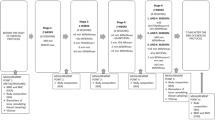Abstract:
The aim of the study was to investigate the effects of regular aerobic exercise training on bone mineral density (BMD) in middle-aged men. A population based sample of 140 men (53–62 years) was randomly assigned into the exercise and reference groups. BMD and apparent volumetric BMD (BMDvol) of the proximal femur and lumbar spine (dual-energy X-ray absorptiometry, DXA) and anthropomorphic measurements were performed at the randomization and 2 and up to 4 years later. The participation rate was 97% and 94% at the second and third BMD measurements, respectively. As another indication of excellent adherence and compliance, the cardiorespiratory fitness (aerobic threshold) increased by 13% in the exercise group. The 2% decrease in the reference group is regarded as an age-related change in cardiorespiratory fitness. Regardless of the group, there was no association between the increase in aerobic threshold and change in BMD. In the entire group, age-related bone loss was seen in the femoral neck BMD and BMDvol (p<0.01). BMD and BMDvol values increased with age in L2–L4 (p<0.004). An increased rate of bone loss at the femoral neck was observed in men with a low energy-adjusted calcium intake (p = 0.003). Men who increased their alcohol intake during the intervention showed a decrease in the rate of bone loss at the femoral neck (p = 0.040). A decrease in body height associated with decreased total femoral BMD (r= 0.19, p = 0.04) and the change in body height was a predictor of bone loss in the femoral neck (β= 0.201). Long-term regular aerobic physical activity in middle-aged men had no effect on the age-related loss of femoral BMD. On the other hand, possible structural alterations, which are also essential for the mechanical strength of bone, can not be detected by the DXA measurements used in this study. The increase seen in lumbar BMD reflects age-related changes in the spine, thus making it an unreliable site for BMD follow-up in men.
Similar content being viewed by others
Author information
Authors and Affiliations
Additional information
Received: August 2000 / Accepted: November 2000
Rights and permissions
About this article
Cite this article
Huuskonen, J., Väisänen, S., Kröger, H. et al. Regular Physical Exercise and Bone Mineral Density: A Four-Year Controlled Randomized Trial in Middle-aged Men. The DNASCO Study . Osteoporos Int 12, 349–355 (2001). https://doi.org/10.1007/s001980170101
Issue Date:
DOI: https://doi.org/10.1007/s001980170101




